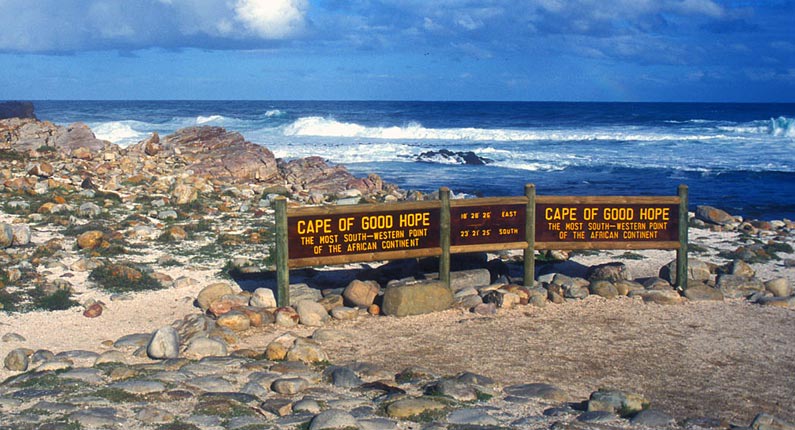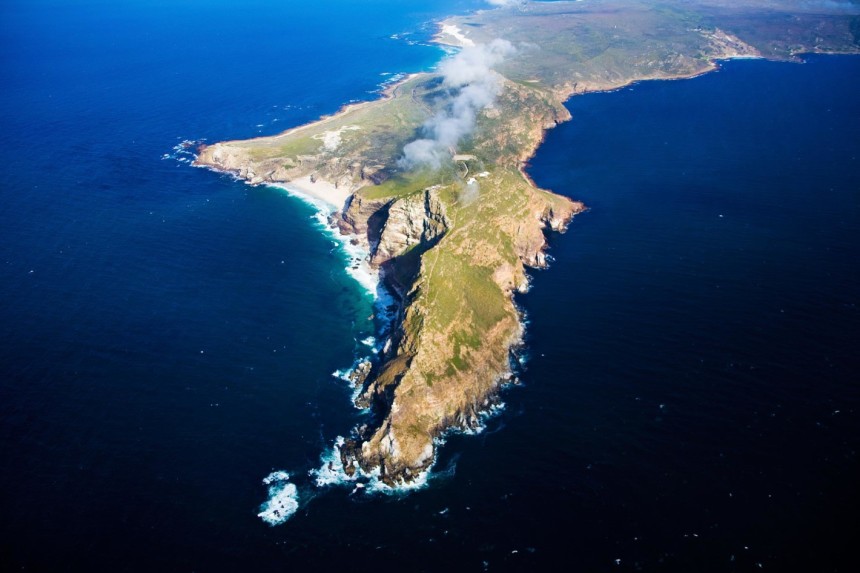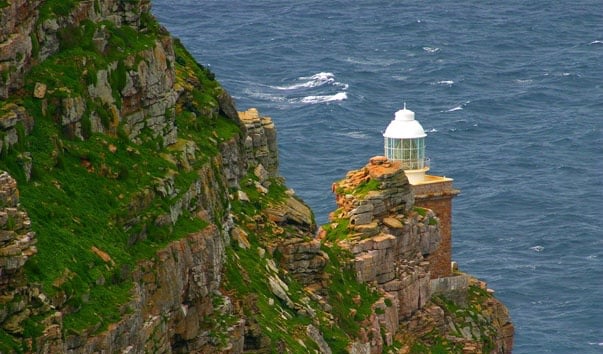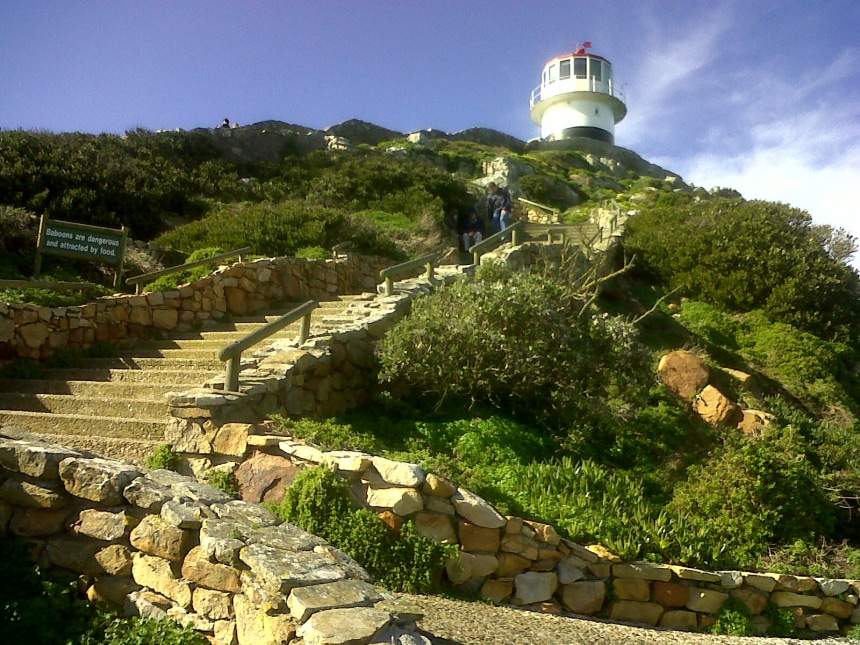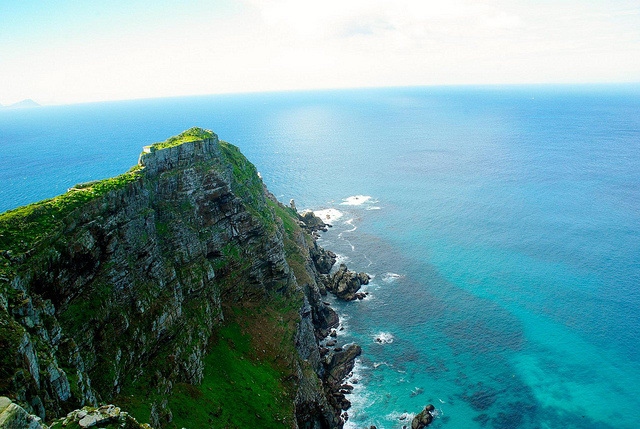
The Cape of Good Hope Nature Reserve is popularly known as Cape Point. Named the Cape of Storms by the Portuguese discoverer
Bartholomew Diaz, when he first landed there in 1488, thinking he was in Table Bay, which he later found to be incorrect and then backtracked to discover Table Bay. John II of Portugal later named it the Cape of Good Hope, because of the great optimism generated by the discovery of this new sea route.
The first lighthouse at Cape Point was built in 1859 at a height of 250m above sea level and used as the Central Monitoring station for all lighthouses in South Africa. The problem with this lighthouse was that it was not visible during cloudy conditions as would be above cloud level thus creating a problem for ships passing by the Cape. This the most powerful lighthouse in the world today. lobbyist wanted a new lighthouse built on the lower point but could not get the government to consent until on 18/04/1911 just over a hundred years ago, the passenger liner "Lusitania" ran aground, during just such cloudy conditions, on Bellows Rock. Of the 774 passengers on board 4 was lost and the ship was totally wrecked. The new lighthouse was then constructed in 1914 on the lower slopes of the point.
The reserve is home to a vast variety of "Fynbos" (fine bush), about 14000 different species of Flora, which is endemic to the Cape and found nowhere else in the world and forms part of The Cape Floral Kingdom. There are some species of Buck, Zebra, Ostriches and Baboons which are endemic to this part of the country.
The Cape of Good Hope is the furthest point southwest of South Africa and not the same as Cape Point where the lighthouses are situated.
The reserve is probably the most visited site in South Africa with thousands of visitors every day of the year. At the Visitors Centre, there is a display of artefacts, stuffed birds, and small animals found in the reserve. For those who find it difficult to walk up the steep path to the point, the Flying Dutchman is a funicular that operates from the parking area to just below the lighthouse.


